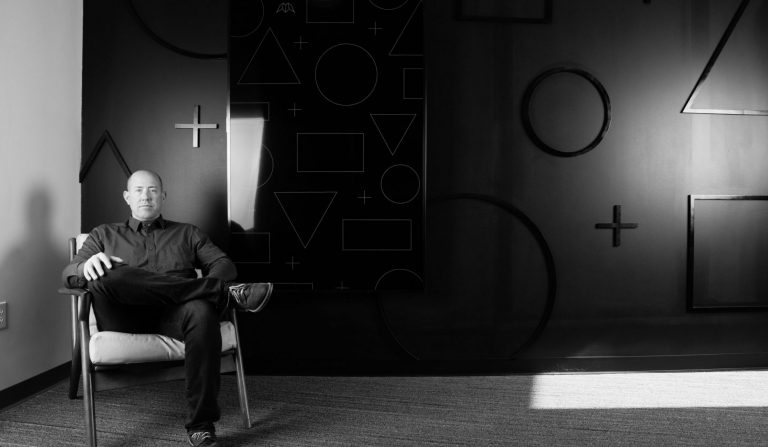Several years ago something inside of me broke loose. In the midst of two major relocations, raising four kids under five years old, and starting a new organization, my body began to revolt against the pace and pressure I was subjecting it to on a weekly basis. Nearly every night I woke from sleep in the grip of panic attacks. Quiet walks on the White River Canal were disrupted by unexpected waves of breath-taking anxiety. Emotionally I was detached and distant from those closest to me, unable to articulate the hidden pain I carried around each day.
Eventually, I reached out to a therapist and then several leadership coaches to help me break this cycle of anxiety. What was a mystery to me then has become crystal clear in my leadership journey: the pain that we disown, neglect, or bury will eventually work its way out in our bodies, relationships, families, and organizations. In the process, I also stumbled onto an uncomfortable but necessary pillar of leadership development – you can’t lead others where you haven’t been yourself. If you want to grow the people you lead, you will first need to embrace inside-out growth yourself.
Two levels of leadership
Regardless of your industry, leading a company is an inescapably human journey. MBA programs, consulting firms, and business conferences are replete with advice on how to master the “outer game” of leadership – scaling, innovation, profitability, management, strategy, and execution. However, anyone who has managed a company or team knows that there is another dimension to leadership that gets less attention while often bogging down otherwise competent executive teams – the “inner game.”
In their excellent book, Mastering Leadership, authors Robert Anderson and William Adams define the inner game of leadership as “a leaders’ interior operating system – what drives the leader, how they define themselves, what is important to them, and what they believe.” Our inner game includes things like values, assumptions, mental models, self-awareness, empathy, personal story, patterns, and aspirations.
Leadership is always occurring simultaneously and interdependently on two levels in a company. On one level, you are expending a tremendous amount of energy under an enormous amount of pressure to meet urgent outer game deadlines. On another level, you are also exerting a tremendous amount of energy dealing with or avoiding the hidden and seemingly less pressing inner game realities that everyone, including you, bring to the office each day.
While the inner game receives less attention, it is the engine that drives and sustains the outer game of business over the long haul.
Own it before it owns you
Companies and leaders who desire to have a rich culture of both profit and people growth must make a conscious choice to own their inner game. In life and leadership, whatever you don’t own will end up owning you. While this daring decision will push you to the brink of your deepest fears, frustrations, and limitations, this heat is also the furnace of personal and organizational transformation.
So how do you get started? Here are two things I’ve learned in my own journey:
1. Name it. Pretending your inner game challenges don’t exist or minimizing its impact on your company’s culture, bottom line, and relationships will only perpetuate the pain you are currently experiencing. The first step of growth is always awareness. Take some time to reflect on your company’s biggest opportunities and obstacles, and then listen to your body and your team for insights into potential inner game issues. Your body is a rich source of information if you slow down to hear its voice. Where are you anxious, afraid, angry, avoidant, or insecure? What issues are causing you headaches, nightmares, high blood pressure, or abnormal stress? Think of these body states as a kind of dashboard for your inner game that need to be constantly managed if you’re going to be a healthy leader.
Additionally, you could also seek some feedback from key team members on how inner game issues such as values, assumptions, emotional intelligence, and self-awareness might be affecting your company’s culture and performance. Honestly discussing these issues can create more powerful conversations that address root issues instead of simply pulling up the weeds.
2. Seek out wise guides who can help you navigate the terrain. In order to create and sustain an ongoing ecosystem of people development, you’ll need the relational safety necessary to begin turning up the heat on vulnerable conversations that are often difficult to have with board members, the C-Suite, or even your spouse. Furthermore, you will need a suite of new tools, practices, and colliding perspectives that provide the heat and structure for your process of inner game maturity. The courage to pursue this kind of human-centered company culture can be accelerated by finding a wise guide who can provide deep coaching for you and your team. While growing your inner game may seem obvious, it’s not easy or natural for most people. It’s a skill that must be cultivated and modeled intentionally from the top down.
Choosing to own my inner game was one of the most important decisions I’ve ever made as a leader. While it feels painful and awkward at first, the authenticity and vulnerability you create through this process will generate higher levels of trust, maturity, development, engagement, and motivation. The marketplace, it turns out, has the potential to be a training ground for the mutual flourishing of owners, employees, shareholders, and stakeholders.













